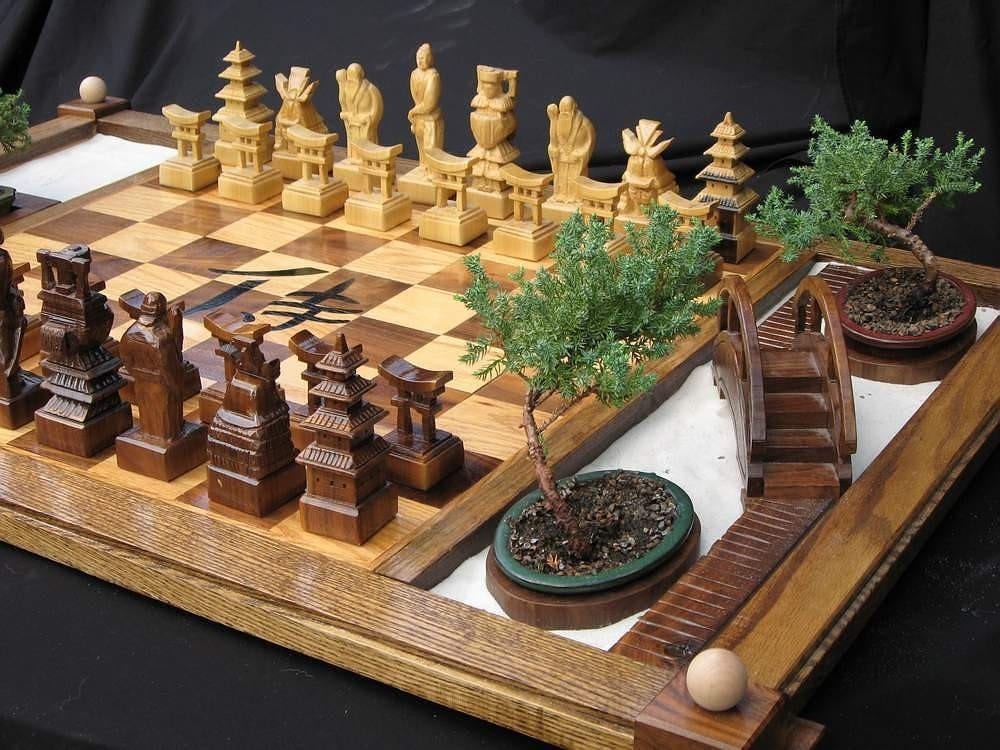The Unique History of Chess Pieces

Chess pieces are not only the rank-and-file of a chess game,but they are also the heart and soul of the chess game experience. There is apiece of history behind every piece on the chess board.
Chess pieces are not only the rank-and-file of a chess game,but they are also the heart and soul of the chess game experience.�� Chess pieces with matching or uniquemovement qualities completing their intended purpose make for a sharp strategicballet with nearly limitless possibilities of progression.
�
Pierre Mac Orlan, famous 20th century Frenchwriter and poet, once said, �There are more adventures on a chessboard than onall the seas of the world�.� In fact,there are approximately 1040 possible legal chess piece positions.� Now consider an average chess piece positioncan possess as much as 218 movement possibilities.� The resulting number of game play optionsrockets to a figure that only International Grandmasters like Garry Kasparovand super-computers such as Deep Blue are able to even begin to grasp.�
�
Sounds daunting, but if the history and purpose of chesspieces are understood, this infinitely varied environment can be experiencedand enjoyed to its fullest.
�
Modern regulation chess sets have a total of 32 chess piecesdivided evenly between two players.� Eachplayer�s force of chess pieces consists of 2 � Rooks (Castles), 2 � Bishops, 2� Knights, 1 � King, 1 � Queen and 8 � pawns.�And their particular histories are as follows:
�
- King �The King has always been royalty among chess pieces and if popularlyrecognized lineage were to be believed, began as the Raja.� Like most royalty, the � King� hasalways been primarily an object of protection rather than one of attack.� Therefore, it has limited but dexterousmovement capabilities.
�
- Queen� The Queen is a creature of great change in the world of chesspieces.� What began as a Mantri, orcounselor, was as incapable of long-reaching moves as the King, butequally dexterous.� Now that modernchess has reduced the number of battling armies of chess pieces andplayers behind them, from four to two, that familiar 64 square board thatChaturanga was born on, opened up, allowing the General, as the Queen wasalso known, to assume an equally powerful offensive role in modern play.
�
- Bishop� The Bishop we know today started with a severely circumscribed movementcapability, although it possess the modern Knight�s ability to leap to itsdestination.� The Bishop, or Gaja asit was once known, has lost its vertical capability but its diagonaltravel equals that of the modern Queen.�This movement modification has made the Bishop a decisive tool ofplay from middle-game onwards.
�
- Knight� The Knight has remained the same in its shape and movement capabilitiessince it was first known as an Ashva, or Horse.� The Ashva was intended to act as amounted division.� The Knight�spower lays in its flanking ability, so it shouldn�t typically lead thecharge.
�
- Rook �Was initially known as the Chariot and played like a heavy infantry division.� The Rook has powerful linear movementcapabilities, but is susceptible to diagonal attack.� Therefore the Ratha, as the Rook wasformally known, was used primarily for defense and/or pinning downopponent�s chess pieces.
�
- Pawn �To the ill informed, the pawn, or foot infantry, was the most expendableof all chess pieces.� As Paul Keres,Estonia�schess grandmaster, once said, �The older I grow, the more I appreciate myPawns�.�� Pawns, or Pedati as theywere once known, form your line of approach, defining your offensive gameplay strategy and your defensive options.�Pawns can also be instrumental in your endgame strategy, so avoidsacrificing your Pawn chess pieces when opening.� Treat your Pawns with respect for as theIrish saying goes, �When the chess game is over, the pawn and the king goback to the same box�.
�
With this kind of history, it is easy to understand why thedesigns of chess pieces vary as they do.�In conforming to each society�s idea of strategic conflict has created aworld of design options for the avid chess player.�
�
You can very easily find a plethora of chess piece designsover the Internet.� There are largeselections of chess sets and styles to choose from.


Comments
Post a Comment